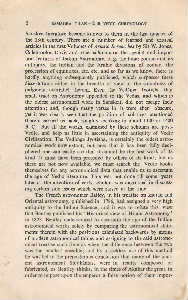Page 649 - Lokmanya Tilak Samagra (khand 2)
P. 649
2 SAMAGRA TILAK - 2 • VEDIC CHRONOLOGY
Sanslqit literature became known to them in the. last quarter of
the 18th century. There are a number of learned and critical
articles in the first Volumes of Asiatic Researches by Sir W. Jones,
Colebrooke, Davis and other scholars on the special and impor-
tant features of Indian Astronomy, e. g. the lunar zodiac and its
antiquity, the Indian and the Arabic divisions of zodiac, the
precession of equinoxes, etc. etc. and so far as we know, there is
hardly anything subsequently published, which surpasses these
dissertations either in the breadth of view or the soundness of
judgment exhibited therein. Even the Vedanga Jyoti~Jha, that
small tract on Astronomy appended to the Vedas, and which is
the oldest astronomical work in Sanskrit, did not escape their
attention; and, though many verses in it were then obscure,
yet it was clearly seen that the position of solstices mentioned
therein carried us back, roughly speaking to about 1100 or 1400
B. C. But all the works, examined by these scholars are post-
Vedic, and help us little in ascertaining the antiquity of Vedic
Civilization. The Vedanga Jyoti~ha, is certainly the oldest astro-
nomical work now extant; but now that it has been fully deci-
phered one can easily see that it cannot be the first work of its
kind. It must have been preceded by others of its kind; but as
these are not now available, we must search the Vedic books
themselves for any astronomical data that enable us to ascertain
the age of Vedic literature. This was not done till some years
later as the attention of early scholars was engrossed in discuss-
ing certain side issues which were raised at the time.
The French astronomer Bailey, in his treatise on Indian and
Oriental astronomy, published in 1786, had ~signed a very high
antiquity to the Indian Science; and it was to refute this view
that Bentley publi bed his' Historical view of Hindu Astronomy '
in 1823. Bentley endeavoured to ascertain the age of the Indian
astronomical works solely by comparing the astronomical state-
ments therein with the positions calculated backwards by means
of modern astronomical tables and assigning to the said astrono-
mical treatise such time as when the difference betwwen the two
was the smallest possible; and by a reckless use of this method
he was led to the preposterous conclusion that many of the anci-
ent astronomical Siddhantas, were in reality composed or
fabricated, as Bentley thinks, in the times of Akabar the great, in
order to impose upon the emperor a false notion of their impor-

